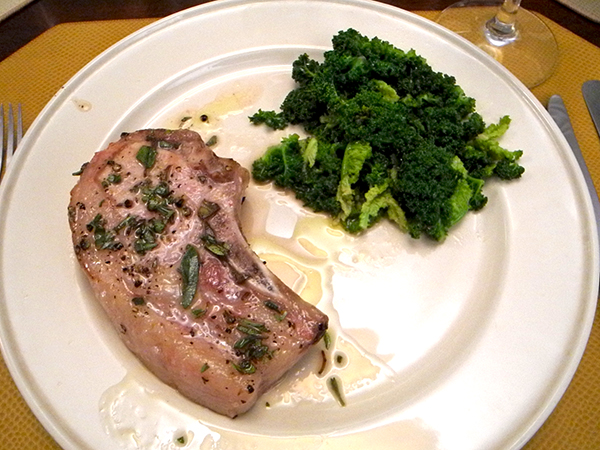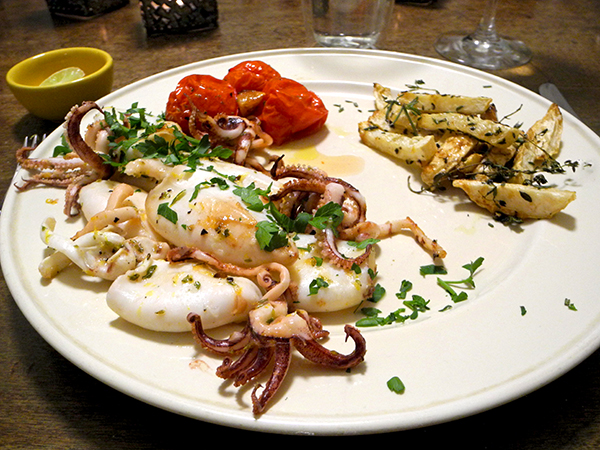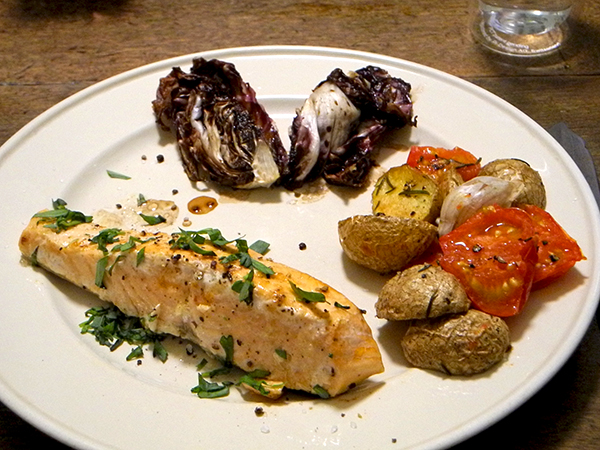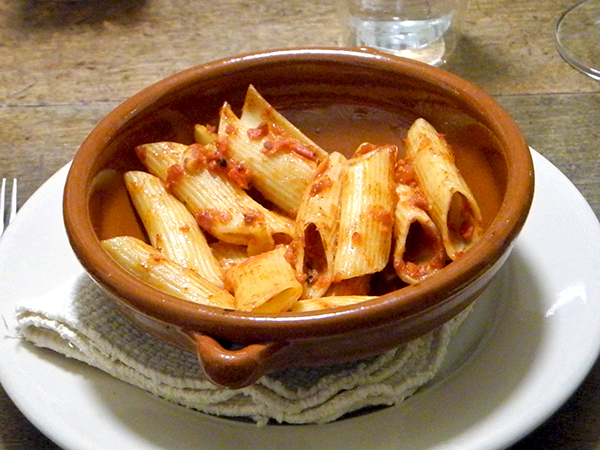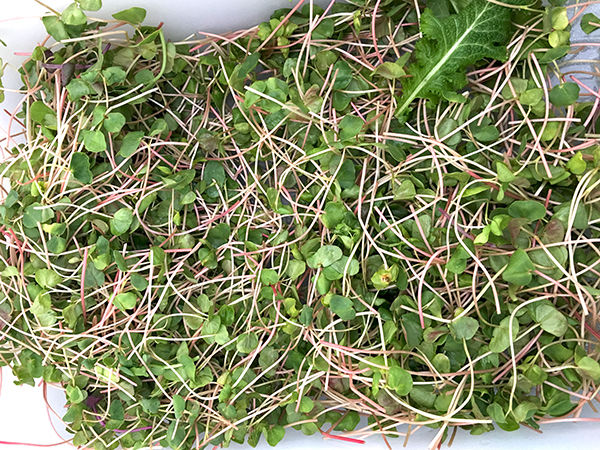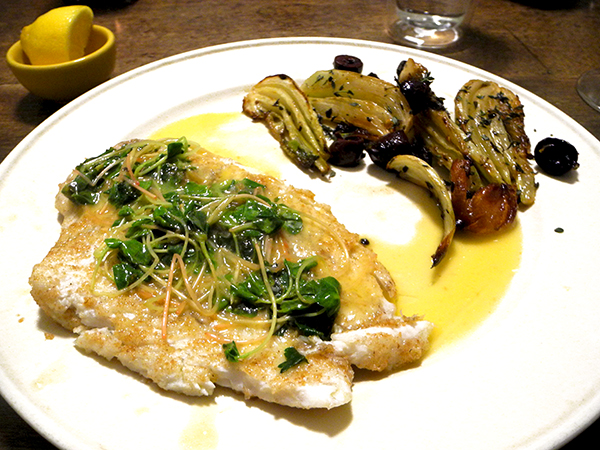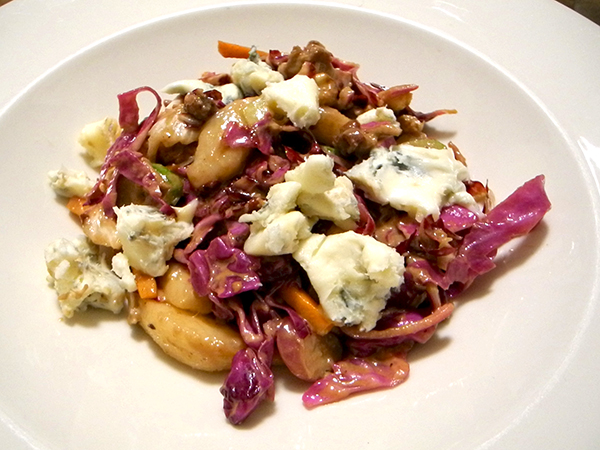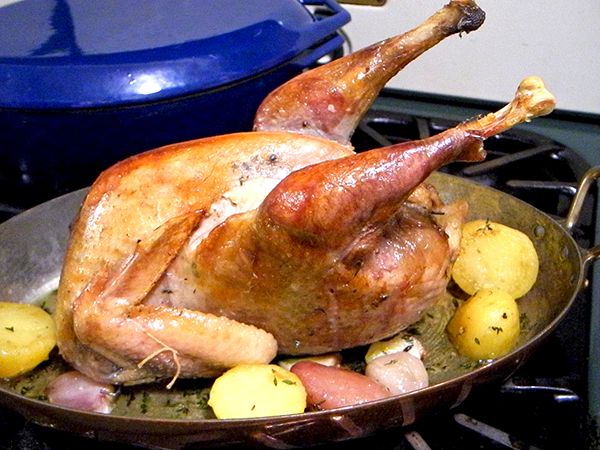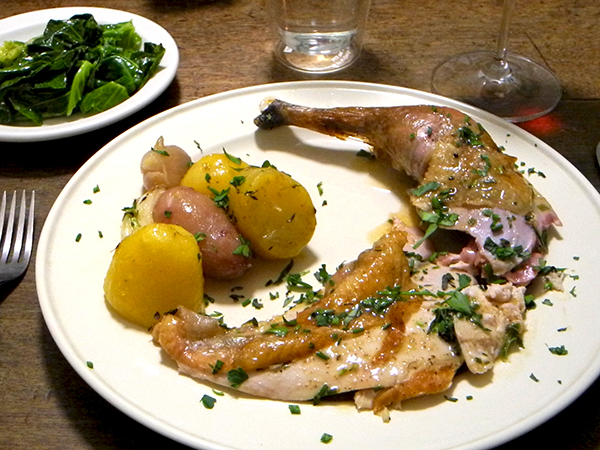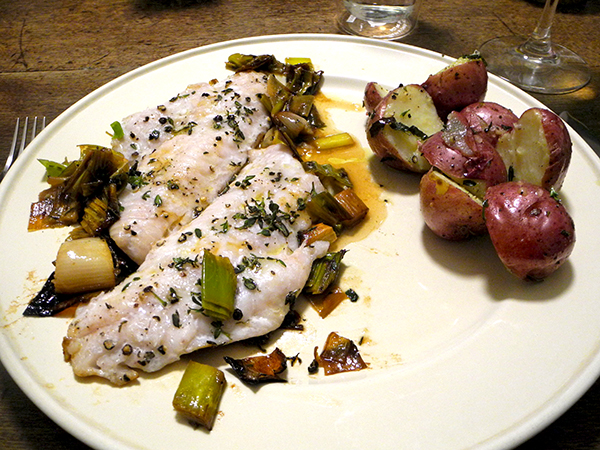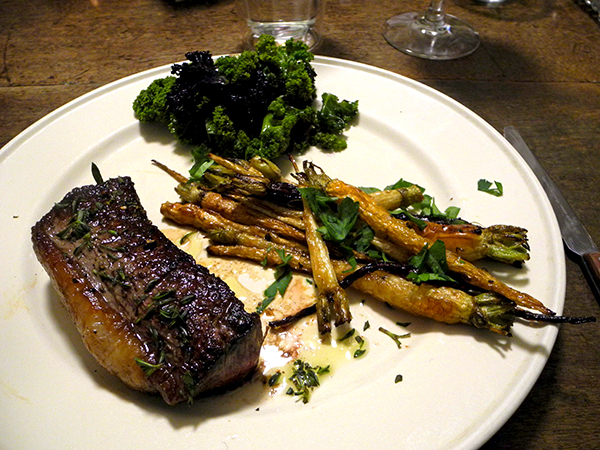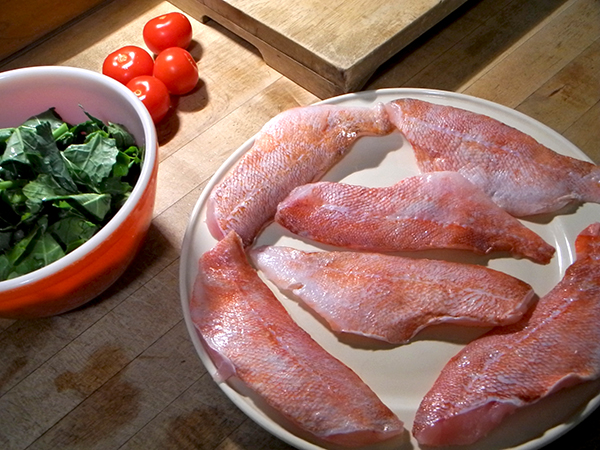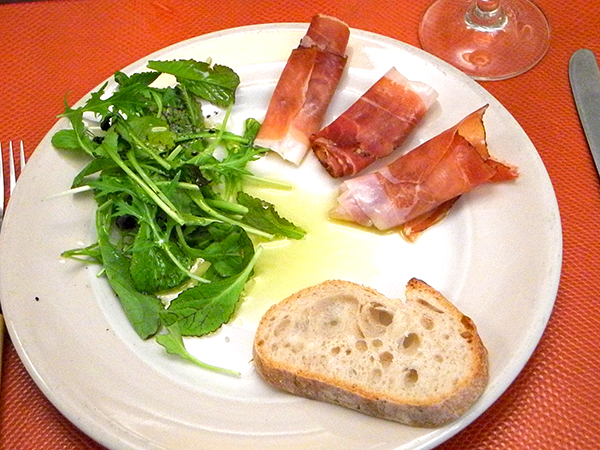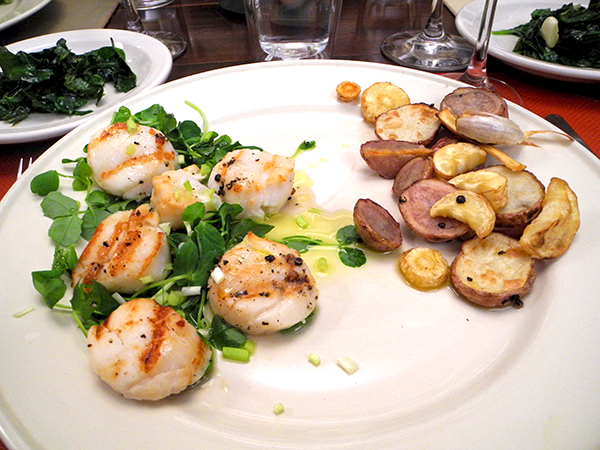maybe the layout looks a bit too obsessive, but it tasted very good
We had invited two friends to dinner long before ‘Jonas’ showed up last night. It was a good thing they lived across the hall, because 30.5 inches of snow might have meant we would not have had a dinner party at all.
Part of the plan was to serve something which would allow me to be out of the kitchen as much as possible, once guests had arrived, to not miss out on the great conversation we expected. Another was to ensure that the preparations would be familiar to me, virtually foolproof in their simplicity, and very tasty
The plan worked very well: The conversation was brilliant, my work in the cucina was pretty simple, and the food and wine were both delicious. There was also an occasional frisson as the wind and snow blew outside our windows.
- to start the meal, we enjoyed an excellent California (North Coast) sparkling, Eponina Brut, with some long rustic breadsticks from Buon Italia
I had decided two days earlier that if the storm prevented me from picking up tuna steaks at the Greenmarket on Saturday, I would serve lemon-roasted pork cops for the main course, and before it a baked pasta I could prepare before the guests arrived (except for putting it in the oven) . Barry and I decided on ‘Orecchiette con i Funghi’, because it seemed like a good introduction to the main course, and because, as baked pastas go, this one is pretty light, in spite of what the list of ingredients might suggest.
- the instructions for preparing the pasta are laid out very clearly in this Kyle Phillips recipe. I’ve served it before in a large oven pan, but this time I divided it into cazuelas. I used a Puglian dried pasta, Benedetto Cavalieri “Single” Orecchiette from a factory in Otranto, shiitake mushrooms from John D. Madura Farms, pancetta from Buon Italia, one small yellow onion from Norwich Meadows Farm, one shallot from Phillips Farm, sliced ham from Dickson Farmstand Meats, pecorino cheese from Buon Italia, and some of the tomato sauce which I had made 10 days earlier and frozen
- the wine was an Italian (Sardinia) white, La Cala Vermentino di Sardegna 2013
The second course included two recipes which had never failed me (the pork chop formula is absolute perfection, and possibly my favorite recipe anywhere); they are each as simple to prepare as a cook could ask for, and so were a perfect choice for serving guests.
I already had two 8-ounce Flying Pigs Farm rib pork chops frozen in the freezer. I thought it would be a simple proposition to purchase two more on Friday, but on that day they only had much larger cuts, so I headed south, to Chelsea Market, and Dickson Farmstand Meats, where I was able to get 8-ounce loin chops. It didn’t bother me that there were two different sets of cuts, except for the rigor of my silly shape aesthetic.
- rib pork chops from Flying Pigs Farm and loin chops from DIxon Farmstand Meats (each approximately 8 ounces), thoroughly dried, seasoned with salt and pepper, seared in an oval copper au gratin pan, two local [sic] lemon halves from Fantastic Gardens of Long Island squeezed on top of the pork, then left in the pan while it went into a 400º oven for about 14 minutes (flipped halfway through, the lemon squeezed over them once again), removed from the oven, scattered with chopped sage from Keith’s Farm, and the pan juices spooned over the top
- curly winter kale from Lucky Dog Organic, wilted in olive oil in which one clove of garlic from Norwich Meadows Farm, halved, had been cooked until it began to brown, then finished with salt, pepper, a drizzle of olive oil, and a squeeze of Long Island lemon
- the wine was an Oregon (Willamette Vally) white, Montinore Estate Pinot Gris 2014
There was also a cheese course, ‘Manchester’ a goat cheese from Consider Bardwell; a prototype product called ‘Benson’ (a pasteurized cow’s milk cheese from a single herd of Jersey and Brown Swiss cows), also from Consider Bardwell; and an Italian gorgonzola ‘dolce’, from Eataly. Thin slices of fresh ‘Tangy Sourdough’ (unbleached wheat flour, organic whole wheat flour, rye starter, water, and kosher salt) from Amy’s Bread, in Chelsea Market, accompanied the cheese.
- the wine with the cheese was the remainder of the bottle of Montinore Estate Pinot Gris

